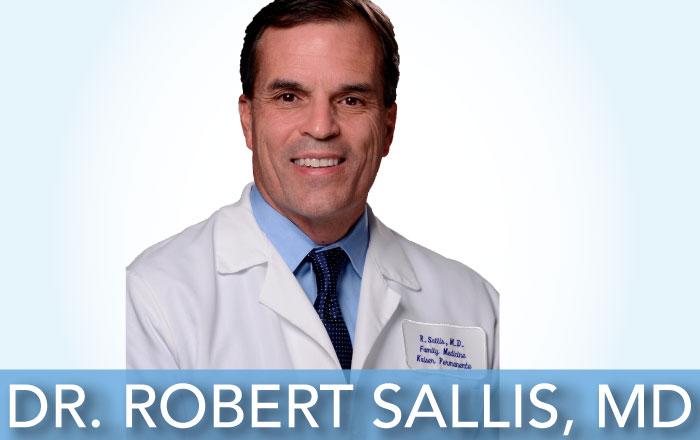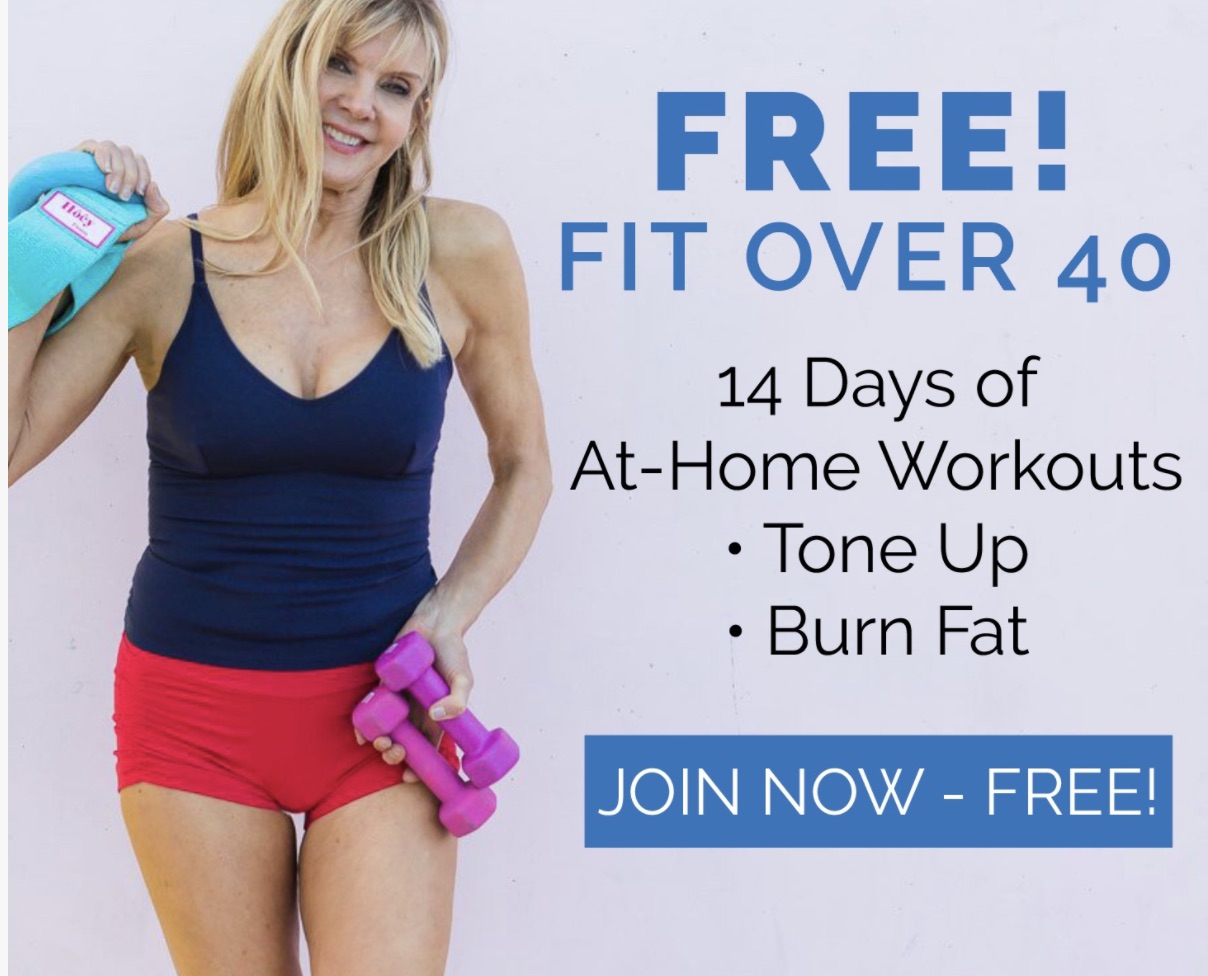Episode 7 | Dr. Robert Sallis, MD| Exercise Is Medicine

Why you should listen –
25 years ago, I launched a campaign called Walk Fit, and during that time countless people told me how walking changed their lives. One woman went from a size 18 to a size six just by walking! It’s what I like to call the “no excuse” exercise: just throw on a pair of shoes and get outside or get on a treadmill. And brisk walking can do more than help you feel confident in your skin. Additional benefits include reduced body fat, lower blood pressure, and increased blood flow to the brain. This is why the health community calls walking — and all exercise — medicine.
Nobody knows this better than today’s guest, Dr. Bob Sallis. He serves as chairman for the Exercise is Medicine initiative, and has served as President of the American College of Sports Medicine. Dr. Sallis travels across the globe promoting the benefits of a healthy lifestyle, from elite athletes to people who simply need help getting off the couch. He is passionate about his message that everyone can get up, take a walk, and in turn change their lives.
LISTEN…CLICK PLAY!
Follow Along With The Transcript
When did the concept of exercise as medicine begin?
I think with Hippocrates! Back in the fifth century Hippocrates said, “Eating alone will not keep a man well; he must also take exercise.” I am certainly not claiming I was the first to discover that the single best thing you can do to improve your health is to be physically active. As a family physician in practice for 25 years, I continue to be amazed when I see patients come in who are 70, 80, even 90 years old and living a high-quality life, and the one common denominator between them is exercise. The concept of the Exercise is Medicine initiative is to bring this understanding into healthcare. If I am not asking my patients about their physical activity, and if I am not prescribing it to them, I am missing a huge component of their health. If a patient is not exercising at all, that’s a good indication they are at a high risk for Diabetes, heart disease, and other chronic diseases. If (or unfortunately once) they have those diseases, exercise is the most powerful medicine I can prescribe to help them. Doctors around the world are trying to make the connection between health and fitness, and trying to refer more patients to fitness professionals.
Herein lies the problem as I see it: it’s a bit low-tech. Telling someone to go out for a walk is wonderful, but it doesn’t require any follow-up tests, procedures, or spending more money. The bottom line is often a major component when we’re talking medicine. Where is the balance between important lifestyle changes and running a business?
Patients often have an expectation that if they go to the doctor, the doctor will order a procedure or test or medication. But I think the practice advocated by Exercise is Medicine is beginning to reshape patients’ expectations. When you ask them, most people prefer not to be on medication or go through a bunch of tests, even if that is what they expect. More and more in healthcare we are looking critically at what we spend money on, and the subsequent ROI. Oftentimes routine procedures do not have a great effect on patients. What you eat, whether or not you smoke, and your exercise routine are the big three factors in health. If I can affect patients in these three areas, that’s 90% of improving their health. This practice is foreign in medicine because so many people are making money off of expensive procedures. A lot of research has been engineered, for example, to show that placing a stint in someone’s coronary artery is the best thing we can do for someone, even though we know that a reasonable diet and exercise help people live longer without a stint. It’s a bit of an uphill battle.
You talk about “squaring off the curve.” I love this concept. It reminds me of last year’s Boston Marathon when a 90-year-old woman ran the marathon, went home, took a nap, and did not wake up. As tragic as it sounds, to me that’s exactly the way I want to go! Explain “squaring off the curve” and where that term came from.
This is what we call the “geriatric curve”: if you plot a person’s functional status (the ability of a person to do the things they want to do) with their age, you get a curve with functional status declining as people get older. People who follow a high-risk lifestyle begin to lose functional capacity earlier because they develop chronic diseases, which have an impact on their quality of life (and in turn the curve starts to drop off). These people enter a state called deficient survival, when they are alive but not really living. However, in contrast to the geriatric curve of people who live a high-risk lifestyle, we see a squaring off of that curve with people who follow a low-risk lifestyle — people who exercise every day, refrain from smoking, and eat a healthy diet. This high functional group may only live seven or eight years longer, but the quality of life is so much richer. They are working, vacationing, visiting with kids, and are physically active and fit. The goal is to maintain functional capacity up to the end.
I bet those people are doing strength training. For the last 15-20 years, I’ve been speaking with women in particular about the benefits of strength training. It used to be a pet-peeve of mine when I worked with women who were afraid of building big muscles. I encourage them to think about lifting heavier weights as part of functional training that will not only keep them active, but help prevent back pain and other injuries. Where do you stand on strength training?
I think it’s the most under-utilized component of fitness that we talk about. As a physician in the office, it’s harder for me to talk about strength training because it often requires more specialized equipment or instruction. I see this particularly in elderly patients; it’s amazing the effect a resistance program will have on their functional capacity. I truly believe I’d prevent more fractures in elderly patients by having them be on a strength training program than taking prescription medication. The question again is: how do I incorporate fitness professionals into healthcare? We don’t have as robust a database on strength training, but every time we do a study on people who practice strength training, we show reductions in chronic diseases.
I was listening to a TED talk about how people don’t get motivated anymore by hearing they will die or get a disease. We typically do things because we fall into patterns, especially patterns based on feeling lonely or depressed. Part of this whole discussion has to be about how we get people to join together in communities to support each other in getting outdoors and being active. How do we integrate this into our daily lives?
It is often a struggle to be physically active today. For example, if you’re a single mom who works at a desk all day and then must get home and take care of your kids, it’s very difficult to make time to get out and exercise. We’ve made exercise very difficult; it is easier for us to be sedentary. How do we make exercise not only the easy, but fun, thing to do? How did we go from recess being our favorite part of the day to it being something we are talked into? We took the fun out of it! For most people, going to the gym, putting in headphones and walking on the treadmill or elliptical trainer simply isn’t fun. The Every Body Walk campaign is about utilizing social media to bring people together who like to exercise, and connecting people within communities to an activity that they enjoy and that gives them the exercise they need. I think we need bright minds to connect people socially around recreation.
Communities are beginning to understand that they need to make themselves more walkable. If you look at why we are living longer today, it has a lot to do with city planners. The bubonic plague, for example, was not cured by a doctor, but by city planners determining that the plague was caused by rats, and if cities organized regular trash removal, the rats — and plague — disappeared. Cholera killed tens of millions of people until city planners figured out how to separate sewer water from drinking water. I believe the plague of the 21st century is inactivity, and it’s the city planners who will fix this by making communities more walkable. We need more cities that make walking the easiest and most fun thing to do.
I noticed you were in Melbourne last month, invited by the Australian Heart Association to discuss smart urban planning.
Sidney and Melbourne are ranked as some of the most walkable cities in the country. Sidney developed a push for walking and had an Olympic medalist in racewalking race a car across the city of Sydney and she beat the car! The city is encouraging people to utilize its excellent public transportation and then walk. Vancouver is another city with a great infrastructure of public transportation to support walking, and people love it. Visitors stay longer, shop more, and cities are finding their economy is more vibrant when the city is more walkable.
I know your other passion is working with elite athletes. You are very involved in running a conference at Ironman, and helping the athletes as they are going through high-intensity training.
I hold a sports medicine conference the week before the Ironman race and we talk about fitness, musculoskeletal injuries and metabolic problems, but at the end of the week we coordinate medical care for the triathletes. We see things there that I’ve never seen before (such as unique cases of cramping and dehydration). It’s a fascinating lab for how someone can push themselves to the brink and survive.
What’s the takeaway for the average person at home when it comes to electrolytes and training? Are there any special tricks to hydration?
The key is knowing your sweat rate. Weigh yourself nude before you exercise, workout for an hour, and then weigh yourself nude again. The difference in your weight change is your sweat rate. For example, if you’re losing a pound an hour, you need to drink 16 oz. of fluid each hour you’re exercising. Trying to match your fluid replacement with what you lose is the key. You don’t want to drink too much or too little. There is no one-size-fits-all approach — everybody is different — and it will also vary based on environmental conditions. People who stick to a plan do the best.
Exercise is Medicine is probably the most important concept I’ve heard about in the last 20 years. I encourage listeners to write down those three simple words. When you see that phrase, remember that what you’re doing is about your entire life and living life to the fullest. Thank you, Bob, for being the cheerleader of this cause.
Physical inactivity is killing nearly 5 million people a year. But the truth is, people take the path of least resistance. Instead of taking the path of least resistance, I encourage you to take the stairs; park farther away from the store; be laser-focused on changing your moving habits in a more healthy, positive way; get a little movement every 20 minutes throughout the day. Keep moving is my motto.


